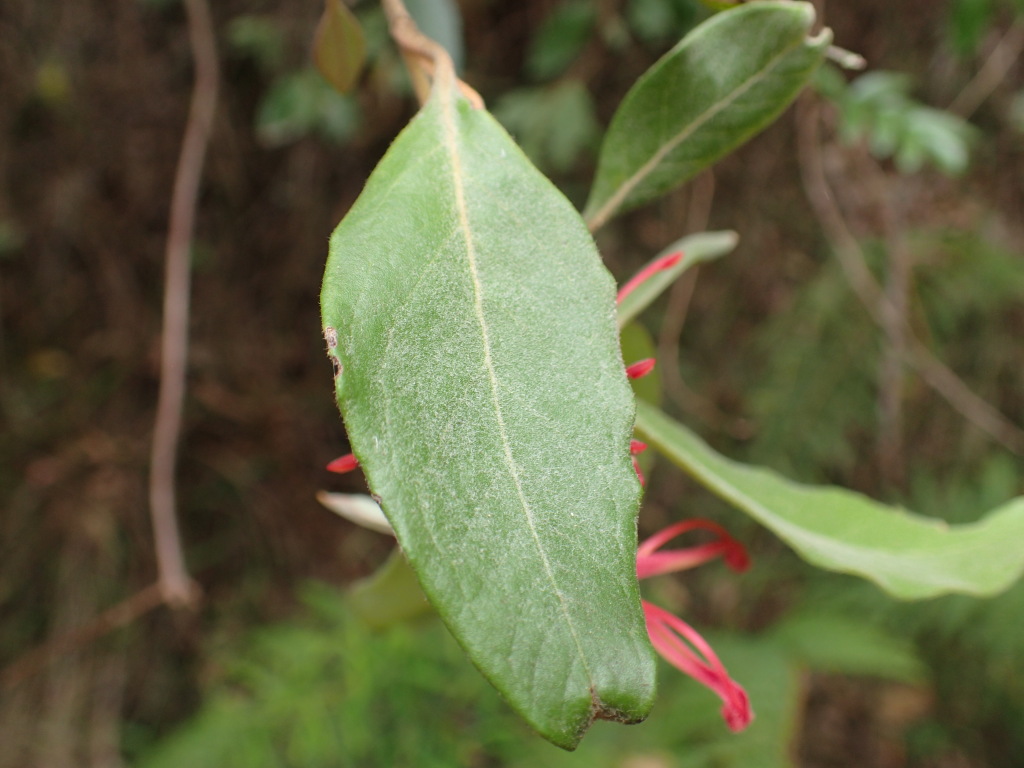Grevillea miqueliana
F.Muell.Spreading to erect shrub (0.5–)1.5–2(–3) m high, (1–)2–4(–7) wide. Branchlets densely subvillous or subtomentose. Leaves entire, narrowly to broadly elliptic, ovate, to obovate, (9–)20-80(–95) mm long, (5–)8–23(–36) mm wide; upper surface glabrous, or granulose; margins more or less flat, rolled downward, slightly to strongly revolute; lower surface loosely villous, OR subtomentose to loosely subsericeous, lateral veins conspicuous to prominent, reticulum evident or absent. Conflorescences usually terminal, decurved to pendulous, simple to 3-branched. Primary peduncles (0–)5–12(–20) mm long, indumentum loosely to densely subvillous, OR subtomentose; floral rachises (5–)12–42 mm long. Very early flower buds with the perianth below the limb usually pale silvery-lilac, the limb dirty brownish-grey. Limb of flower buds subglobose in side view, apex obtuse. Limb-segments of tepals (mature pre-anthesis flowers) not keeled or obscurely keeled along external midline. Dorsal tepals 15–22 mm long, 1.9–2.5 mm wide. Perianth outer surface (below limb) red with yellow or orange central blotch on ventral tepals, epidermis clearly visible, loosely subvillous or loosely subtomentose; inner surface densely bearded near base; perianth inner surface bichromatic, red and yellow. Pistil 18.2–22.5(–23.5) mm long, ovary stipitate, glabrous, style pink, pinkish-red or red; face of pollen oblique to style, flat to convex. Fruits glabrous.
GipP, EGL, HSF, VAlp. Grevillea miqueliana is endemic to Victoria. Confined to the central Gippsland and alpine region of Victoria, occuring from 300–1500 metres above sea level.
Three subspecies are recognised.
 Spinning
SpinningStajsic, V.; Molyneux, W.M. (2006). Taxonomic studies in the Grevillea victoriae F.Muell. species complex (Proteaceae: Grevilleoideae) I. Descriptions of nine previously segregated, and three new taxa.. Muelleria 22: 22–76.

